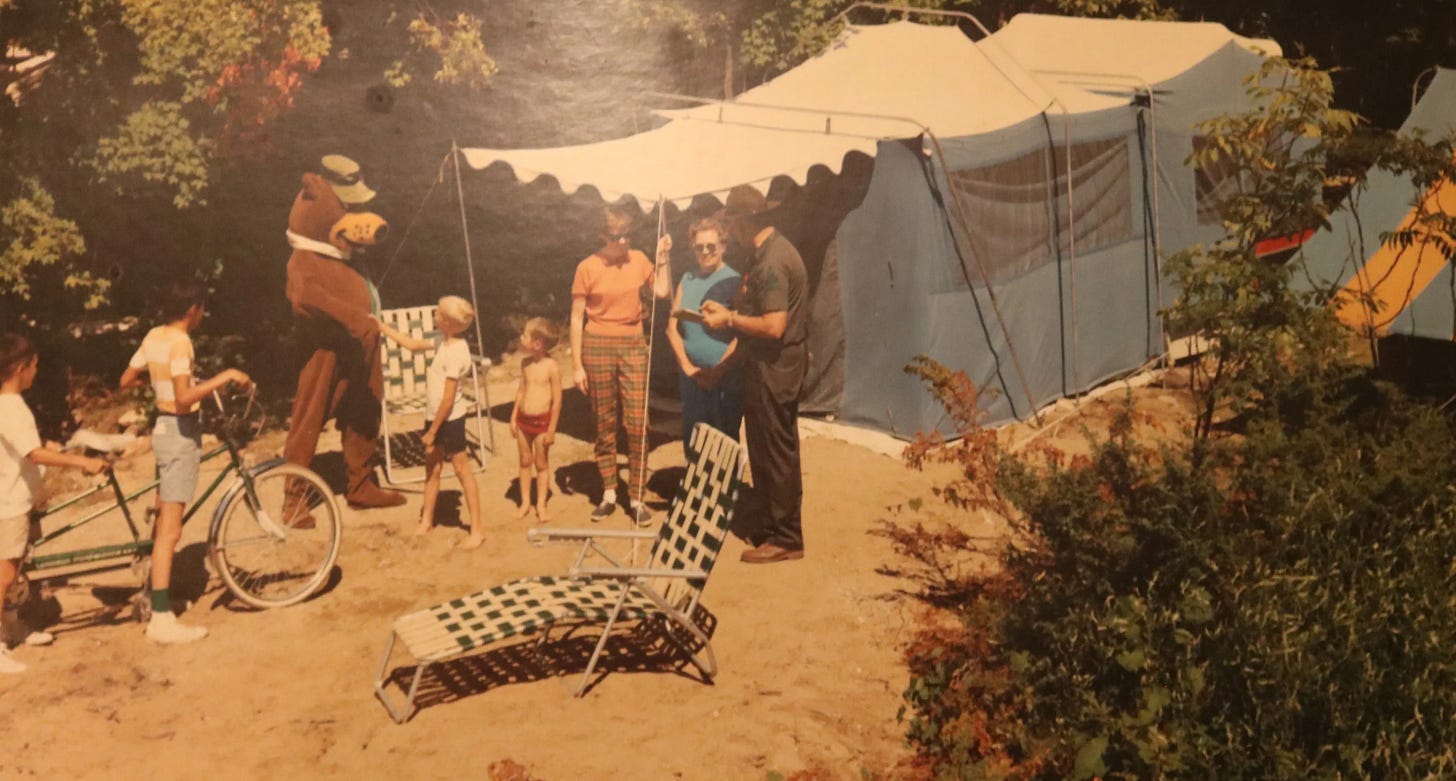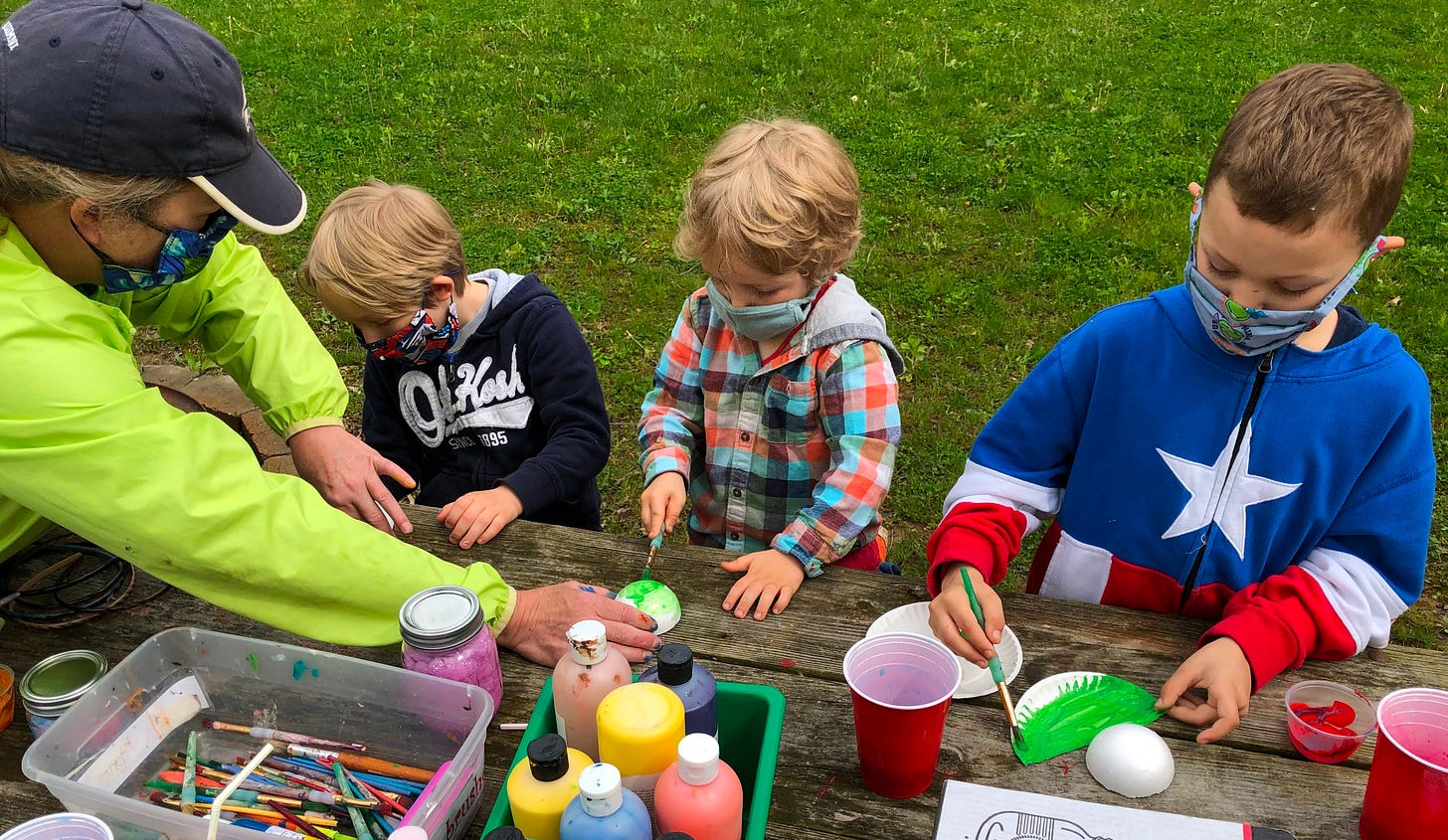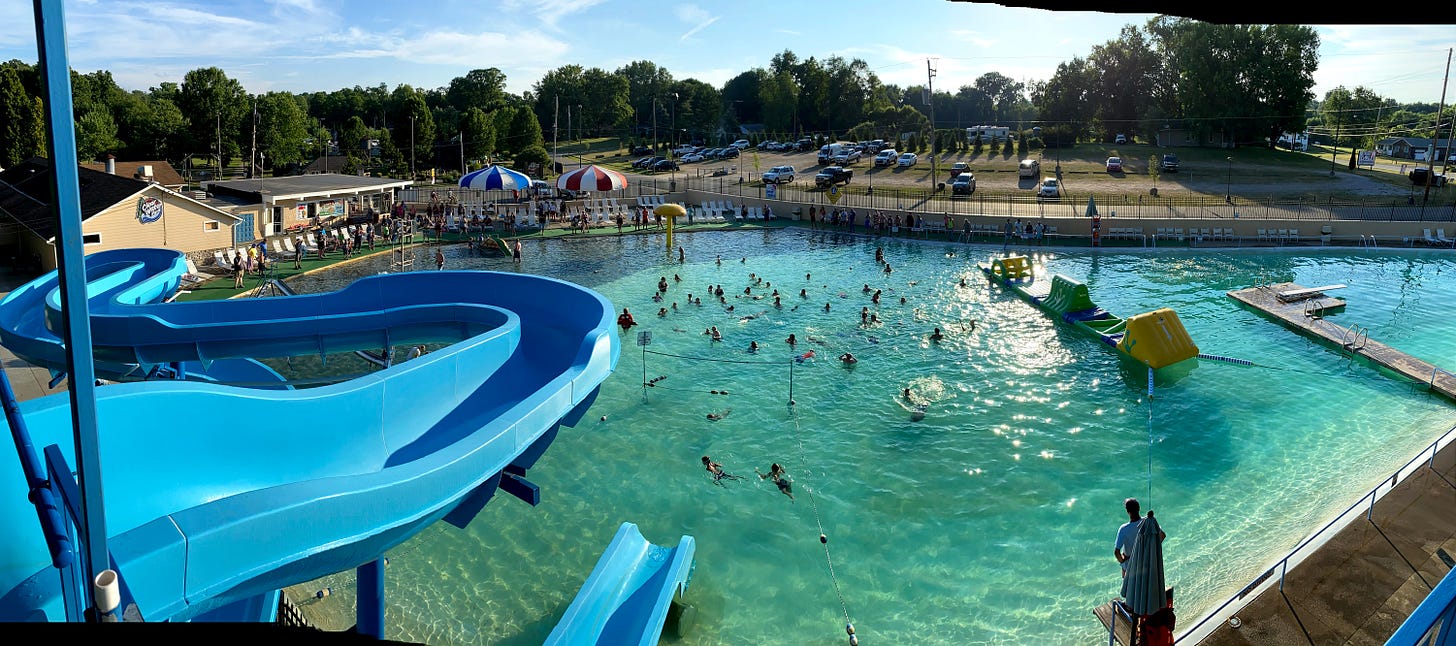When you think of successful campground franchises, one name stands above the rest for family-friendly camping: Jellystone Park
They've transformed the camping industry by creating something unique – a network of campgrounds that doesn't just offer a place to stay, but delivers a complete family entertainment experience.
I should know. The first 6 years of my career were spent at a Jellystone location in Akron, Ohio. I went from a customer service agent to manager in a few short years.
Those years gave me an insider's view of how a campground can evolve from a simple place to pitch a tent into a destination that creates lasting family memories. From watching new campers transform into seasonal regulars, to seeing young staff members develop into capable leaders, I witnessed firsthand how the Jellystone model doesn't just serve families – it helps build them.
But what makes Jellystone Parks so special? And more importantly, how can you apply their best practices to your campground?
Today, I'm breaking down everything I've learned from visiting and working at several Jellystone properties, and showing you how to implement their winning strategies – whether you're part of their franchise or not.
First, a quick history.
The franchise began in 1969 when entrepreneur Doug Haag and his partner, Robert Borkovetz, opened the first location in Sturgeon Bay, Wisconsin.
They purchased the 30 wooded acres for only $3,000!
In only about 3 months, the park opened its doors and it was only $3.50 to camp including amenities. The place was packed.

Two more parks opened in 1969 and 1970, one in Orlando and one in California. Others were opened quickly in Orlando, Wisconsin Dells, and Apple Valley.
By the end of 1971, there were 10 franchised Jellystone Park locations in operation.
In 1974, Doug Haag decided to move onto other business ventures and left the company to Jim Webb. Over the next decades, the business grew from 10 to 75 locations.
In 2022, the franchising company was purchased by Sun Communities & Sun Outdoors (NYSE: SUI) and the franchisor was renamed Camp Jellystone.
Now, let's understand what makes Jellystone different:
They're not just a campground – they're a destination. Built around Yogi Bear™ and his friends, every Jellystone Park is designed to create memorable family experiences.
We're talking:
Character meet and greets
Themed weekends and events every day
Family-focused amenities designed to attract families, particularly larger families with multiple kids
Entire teams of staff focused on the guest experience and implementing activities
But here's what most people miss: The real genius of Jellystone isn't just their brand recognition – it's their operational excellence.
The average Jellystone Park location generated $2.9 million in 2022 according to the Jellystone Park Franchise Disclosure Document.
And campgrounds that joined the Jellystone Park system since 2020 averaged year-over-year revenue growth of 40% in Y1 and 17% in Y2.
That’s not a small figure.
Clearly something is different. And it seems to be working.
Let's break down their key strategies for growth:
1. Ancillary Revenue Growth
One of Jellystone's biggest secrets isn't the camping revenue – it's everything else. At my location in Akron, we generated significant revenue through character experiences ($15-30), gem mining ($6-30), tye-dye t-shirts ($15), ceramics ($5-20), and food service. We made it easy for guests to spend by offering package deals, member-only experiences, and seamless payment with the ability to add it directly to your campsite.
The average Jellystone Park earned 33% of its revenue from ancillary sources such as food, merchandise, and paid activity fees in 2022.
2. Local Marketing to Families
Jellystone's marketing power comes from its hyper-local approach. We built community relationships through school partnerships (great for hiring high school and college kids), local discount programs, and shoulder season events. Our marketing targeted families within a two-hour drive radius, focusing on repeat visitors who became our best advertisers. Simple, segmented campaigns by zip code kept our base engaged and coming back.
3. Retail Merchandise
The park store isn't just a convenience – it's a profit center. Success came from selling the right products at the right time: seasonal items, supplies at premium prices, and custom-branded merchandise. We rotated stock frequently and timed releases with themed weekends, creating excitement and urgency around new arrivals.
Based on 2022 data, Jellystone Park locations generated 9% of their total revenues from their retail stores. The same data shows that the average spend per night (for non-seasonal guests) in the retail stores was $17.49.
4. Education & Employee Training
This is Jellystone's secret weapon. Every staff member learns they're not just working a job – they're creating memories. In the Spring, Camp Jellystone invites all new owners and managers to CAMP and CARE, multiday training programs for management and recreation.
Weekly training sessions, detailed manuals, and cross-department experience ensure consistent service. We rewarded exceptional performance and maintained high standards through regular training and managers directly overseeing each revenue-generating department.
The Takeaway
Here's what most people get wrong: They try to copy Jellystone's activities, amenities, and strategies without understanding the systems behind them. You’re never going to be able to replicate that directly. You don’t have a Yogi Bear and a franchise agreement with Warner Brothers ;)
Success isn't about having a waterpark or a jumping pillow or the Jellystone brand – it's about creating systems that deliver consistent experiences.
Guests who visited my location in Akron, OH got a very similar experience to someone who visited another Jellystone location like a park in Lodi, CA or Williamsport, MD.
Why? Operational excellence. Not amenities. Any park can add amenities.
The key is to start small and build:
Start with the basics which include exceptional service and clean facilities. Add one revenue stream at a time – maybe a camp store or weekend activities. Test, measure, and reinvest in what works. Create systems for each addition before moving forward. Focus on memorable experiences that bring families back. Remember, Jellystone's first location was simple – they built their empire one happy camper at a time.
Jellystone Parks didn't become successful overnight. They've spent decades perfecting their systems, training their staff, and building their brand.
You don't need Yogi Bear to create an exceptional camping experience. What you need is:
A clear vision of your guest experience
Systems to deliver that experience consistently
Well-trained staff who understand their role
Multiple revenue streams to support growth
A strong brand identity
Whether you're a small independent campground or a growing network of properties, these principles can transform your business.
I've seen these strategies work firsthand across multiple properties. This is still the same playbook I use to this day. The key is consistency and commitment to excellence.
I’m Alex Burkett, your Campground Growth Specialist, showing you that success leaves clues and Jellystone has left us plenty to learn from.
Until we talk again,
—Alex
PS: Want to transform your campground into a 5-star destination while maximizing your revenue? Join hundreds of successful owners getting actionable strategies delivered straight to their inbox. Subscribe to Camping Codex now – it's free, and your future guests will thank you!






